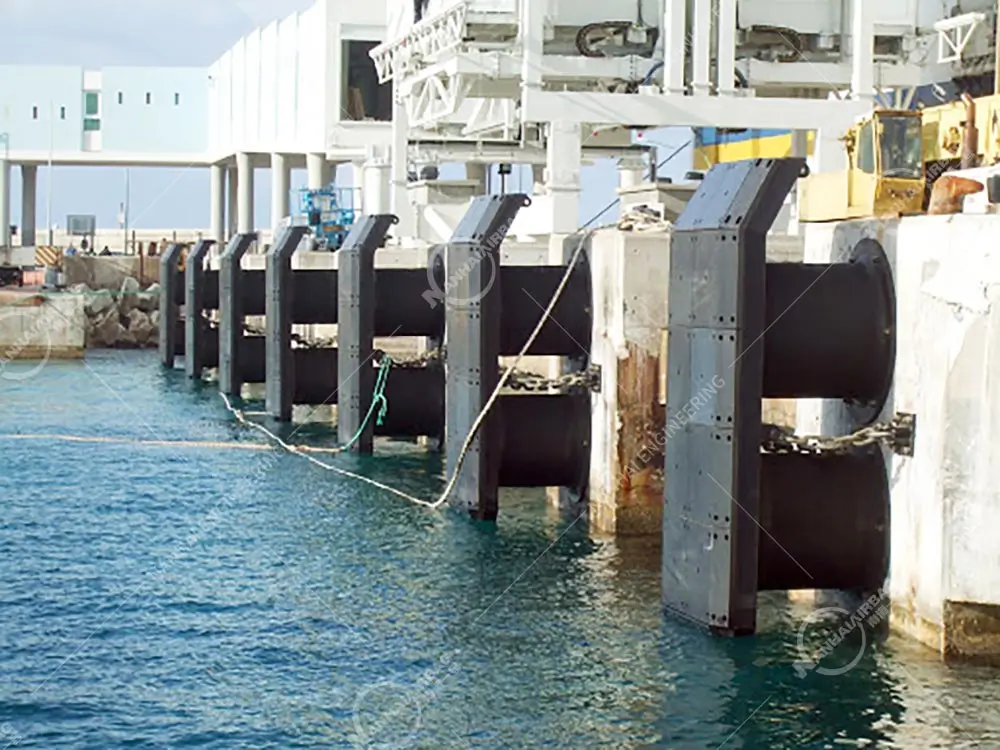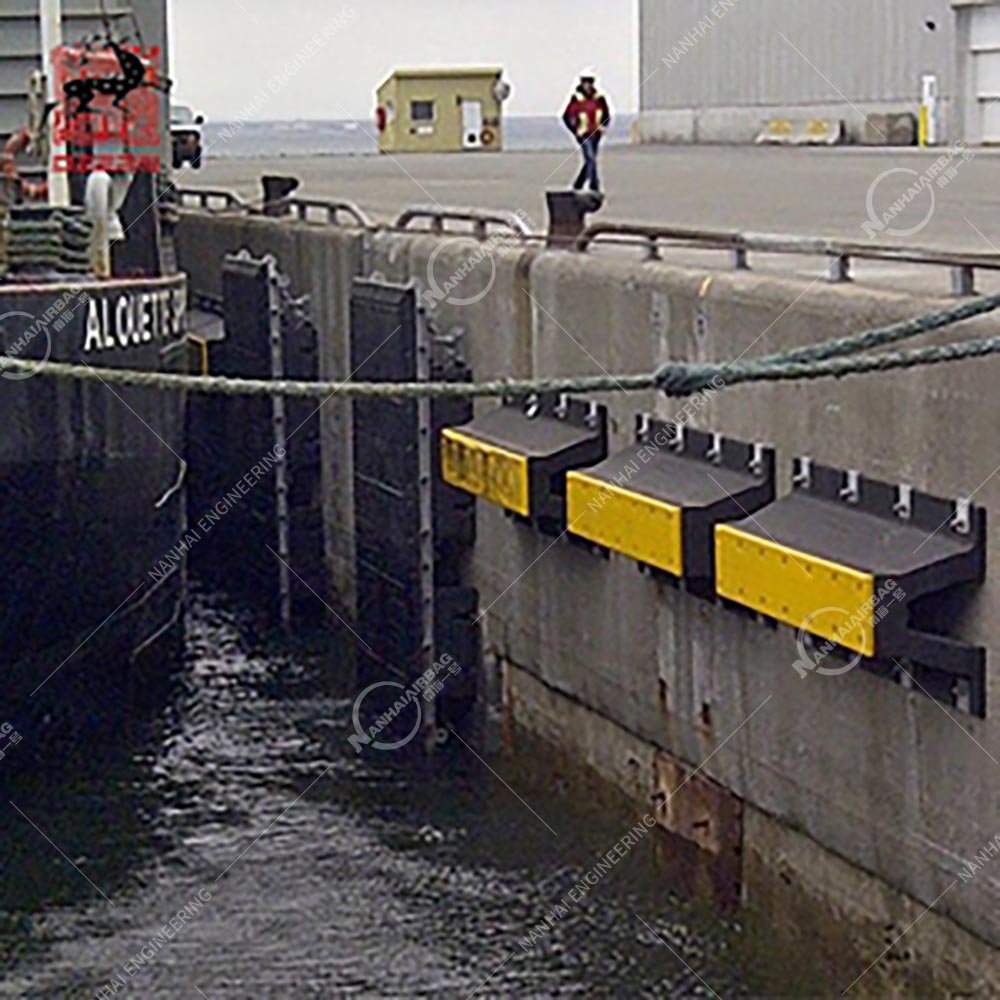The impact of smart ports on marine fenders
06/23/2025How to transport Yokohama fenders?
06/23/2025How UHMW-PE Faced Fender Panels Reduce Vessel Damage?
Why It Matters
We’ll explain how UHMW‑PE fender panels integrate with cone fenders, cell fenders, and standard rubber fenders, plus real-world port examples making berthing safer and cheaper.
Docking mishaps can cost shipping companies millions—picture a tanker grazing the berth, scraping the hull, delaying schedules, and triggering repair work. With increasing global commerce, ports are busier, vessels are larger, and the risk of damage is higher. That’s why upgrading fender systems with UHMW-PE faced panels is not just smart—it’s essential now. The savings? Reduced repair costs, safer operations, and longer-lasting berth infrastructure.
What Makes UHMW‑PE Face Fender Panels a Game-Changer
Ultra‑durable and ultra‑smooth: UHMW‑PE (ultra‑high molecular weight polyethylene) offers exceptional abrasion resistance—outlasting steel and timber facings—while providing a low friction surface so ships glide in, not grind in.
Low friction = less vessel wear: The material’s low friction coefficient (≈0.12–0.2) means less shear force and wear during berthing, protecting both hull paint and fender life.
Lightweight & long‑lasting: UHMW‑PE is tough, corrosion-resistant, and doesn’t rot or splinter like wood. It keeps its properties in UV, salt, and heavy impact environments, and is often recyclable.
How Fender Panels Work in Action
Modular protection on rubber fenders: Common fender types like cone fenders and cell fenders are outfitted with steel frontal panels and UHMW‑PE facings. These panels can be replaced independently, extending both rubber fender life and overall system performance.
Enhanced berthing efficiency: The combination of cone or cell-shaped rubber bodies and UHMW‑PE front layers allows vessels to berth at different angles with minimal reaction force and high energy absorption—a perfect balance of strength and adaptability.
Cost-effective maintenance: Instead of replacing large rubber fenders, ports can simply swap out worn UHMW‑PE panels, saving labor, downtime, and material costs.
💡 Featured Snippets
What is a UHMW‑PE faced fender panel?
A UHMW‑PE faced fender panel is an ultra-high molecular weight polyethylene sheet mounted on the front face of a rubber or steel marine fender. It provides low friction, high abrasion resistance, and easy replacement, protecting both vessel hull and dock structure.
How does UHMW‑PE reduce docking damage?
Ultra‑smooth and tough, UHMW‑PE slides against vessel hulls during berthing, reducing shear forces, friction, and the risk of scratches or structural damage. Its shock-absorbing strength also extends fender lifespan.
Can UHMW‑PE panels be replaced?
Yes—the panels are modular, bolted to steel backing frames. When worn, only the UHMW‑PE layer needs replacement, cutting maintenance time and costs without needing full fender replacement.
Why Keep Reading?
Curious how UHMW‑PE works with cone fenders vs. cell fenders, or how it stacks up against rubber fenders? In the next sections, we’ll break down differences, dive into case studies, and show where to install UHMW‑PE across your fender lineup: rubber fender, cone fender, and cell fender.
How UHMW‑PE Fender Panels Work on Cone Fenders
Cone fenders already provide excellent energy absorption thanks to their conical shape. When you add UHMW‑PE faced fender panels, you protect the rubber body from wear caused by friction and impact. The low-friction surface helps ships slide smoothly during docking, minimizing hull scratches. Plus, if a panel wears out, you replace only the fender panel without changing the whole cone fender system, saving time and money.

How UHMW‑PE Fender Panels Benefit Cell Fenders
Cell fenders are strong and durable, designed to handle high-energy impacts. Adding UHMW‑PE faced fender panels enhances their abrasion resistance and provides a smooth contact surface to protect vessels. The modular fender panels make maintenance easy: just swap out the panel instead of the entire cell fender, reducing operational disruptions and cutting maintenance costs.

UHMW‑PE Fender Panels for Rubber Fenders
Rubber fenders come in many types, such as arch fenders. Applying UHMW‑PE faced fender panels to these fenders improves their lifespan and performance. The smooth, tough surface reduces friction and protects both the fender and the ship’s hull. This upgrade also helps reduce the need for costly repairs and frequent replacements.

FAQ
- Do UHMW‑PE panels fit all fender types?
Yes—especially effective on cone fenders, cell fenders, arch fenders, and rubber fender systems. - What is the lifespan of UHMW‑PE fender pads?
Typically 10–20 years, depending on berthing frequency and conditions. They outlast wood and match classification standards. - Are UHMW‑PE fenders environmentally friendly?
Yes—many use recycled resin, eliminate timber use, resist marine borers, and are 100% recyclable. - How do UHMW‑PE friction calculations benefit berthing?
Lower friction means less shear stress on hulls, smoother berthing, and fewer collisions or hull abrasions—protecting safety and cutting repair downtime.
